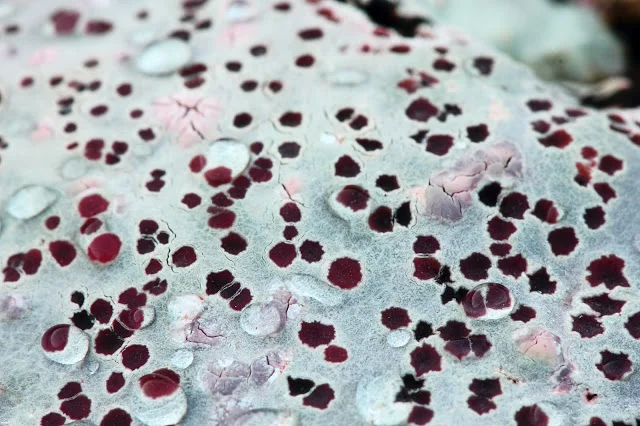"Stretching his hand up to the stars, often a man forgets the flowers at his feet."
— Jeremy Bentham
Marion Island clearly has its stars, and I'm not talking about the unbelievably clear nights. Macaroni penguins take centre stage at the Amphitheatre whilst wandering albatrosses roam the mire-strewn plains of Goney, attracting the attention of passers-by with bubble clicks and wide spread wings. The seals lounge about on the beaches and nearby slopes like royalty, making it very clear that you are an intruding peasant and curse you for waking them up from their afternoon siestas. "Off with his head (or leg)!" I can sometimes hear them say. Have I been here too long? Let us not forget the killer whales, their stardom heightened by their mysterious lives in the deep blue. All these large creatures and their seemingly obvious ways of living are the first to receive our praise and attention, and will forever live their lives in the spotlight.
There are, however, many amazing little worlds on Marion that we so hardly get to be a part of simply because they're too small. I brought along with me, on this adventure of a lifetime, a very special friend who I've become extremely fond of - my Canon 100 mm f2.8 macro lens (thank you Kieron). These are some images of life through her eyes.

This is the flightless moth Pringleophaga marioni, endemic to Marion Island. Thousands of years ago the ancestors of this moth could fly and were blown in the direction of a newly formed volcanic chunk in the Southern Ocean. The relentless winds made flying too dangerous and slowly, after many generations, wings became useless and the moths resorted to walking.

A flower of the coastal plant Cotula plumosa.

A macroscopic Antarctic Tern's eye-view of Lycopodium susurrus

The common chickweed Cerastium fontanum. It's not native to the island, but together with garlic flakes and balsamic vinegar it makes a lovely salad.

A psychadelic lichen spreads its colourful presence over a streamside boulder.

This is Matchstickitus lionensis. Just joking, it's a little sprout from the 100 or so species of moss on the island.

A little aphid wades through the intricate macroscape of an Azorella cushion.

A lichen of the genus Cladonia peers out from a macroscape of hepatics.

A stem flower of the prickly ball plant Acaena magellanica

The gemmae cups of the liverwort Marchantia berteroana are home to the plant's little kids, gemmaes. When the time is right and the rains come, they'll get splashed out and fall to the ground where theyll develop into new liverworts.

Psychedelic lichens like this carpet the volcanic rocks around Marion.

A spider wades through the busy undergrowth of a macroscape.

An intimate look at a prickly ball of Acaena magellanica. The tiny arrows on the end of each spike, which carry the plant's seed at the bottom, attach to the feathers of birds, the fur of seals and the clothes and beards of humans. What a clever dispersal strategy!

A caterpillar of the small flightless moth Embryonopsis halticella munches happily away on a blade of Poa cookii. These caterpillars spend their entire days on these plants until they are ready to cuddle up in a warm silk-lined cocoon sleeping bag where they'll chill out and think about how great it's going to be to fly, erm, walk.

This moss definitely is a pretty flower thing.

A flower of the invasive Sagina procumbens peers out from the crowd.

A newly sprung bud of the small fern Blechnum penna-marina begins its life with an unfurling yawn.

Not much is known about the mushrooms on the island except that they give one hell of a kick! Just joking, this species is thought to belong to the genus Galerina and is deadly poisonous.

Perching on a Blechnum bud, a fledging aphid gets ready to experience the life of an albatross.

The leaves of Acaena magellenica are lined by an intense purple.

One of the many lichen species on the island grows on the 'mouse-walk' at the old base.

A flower of the broadleaved Callitriche antarctica plays host to a wandering down feather.
